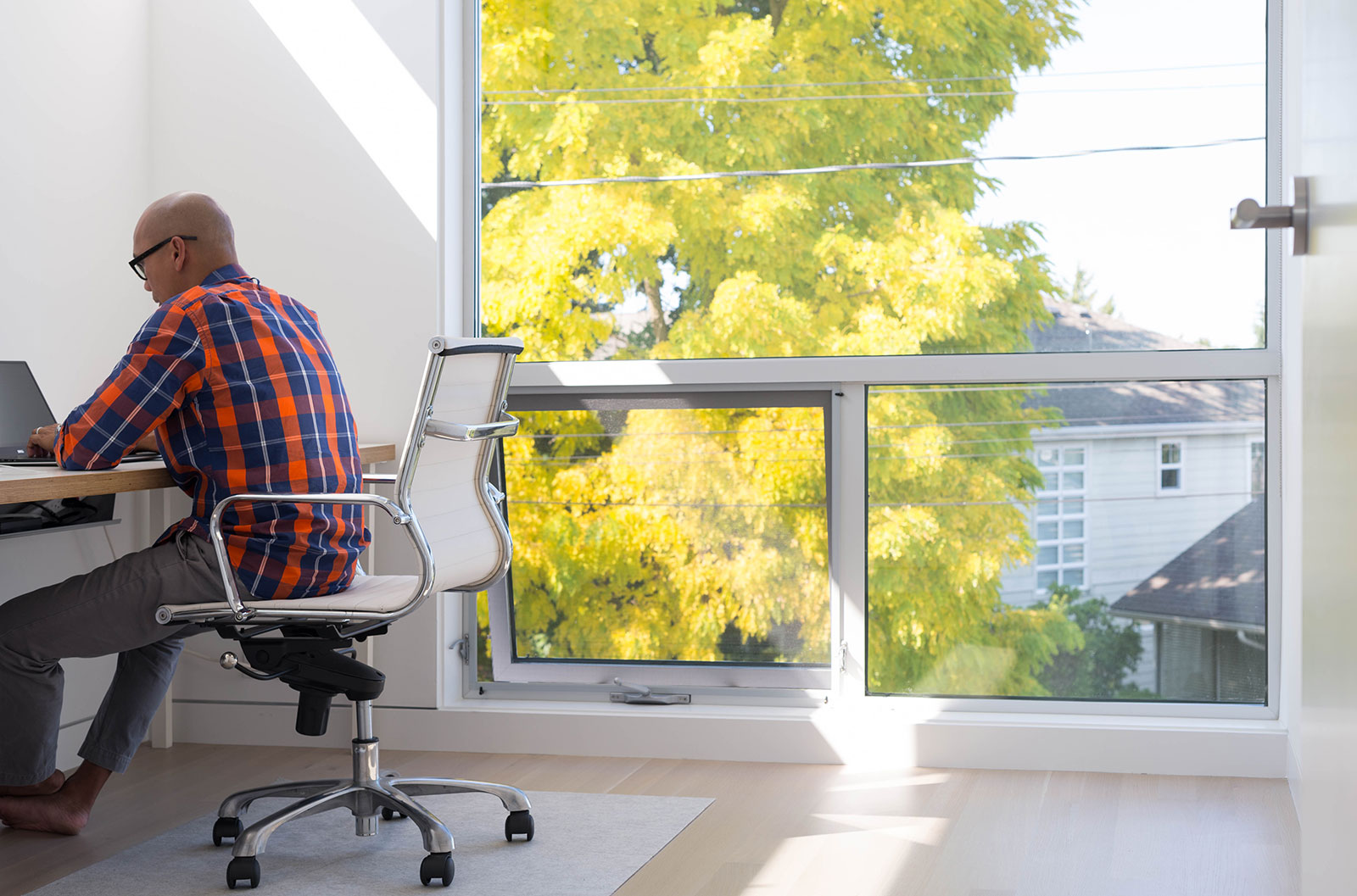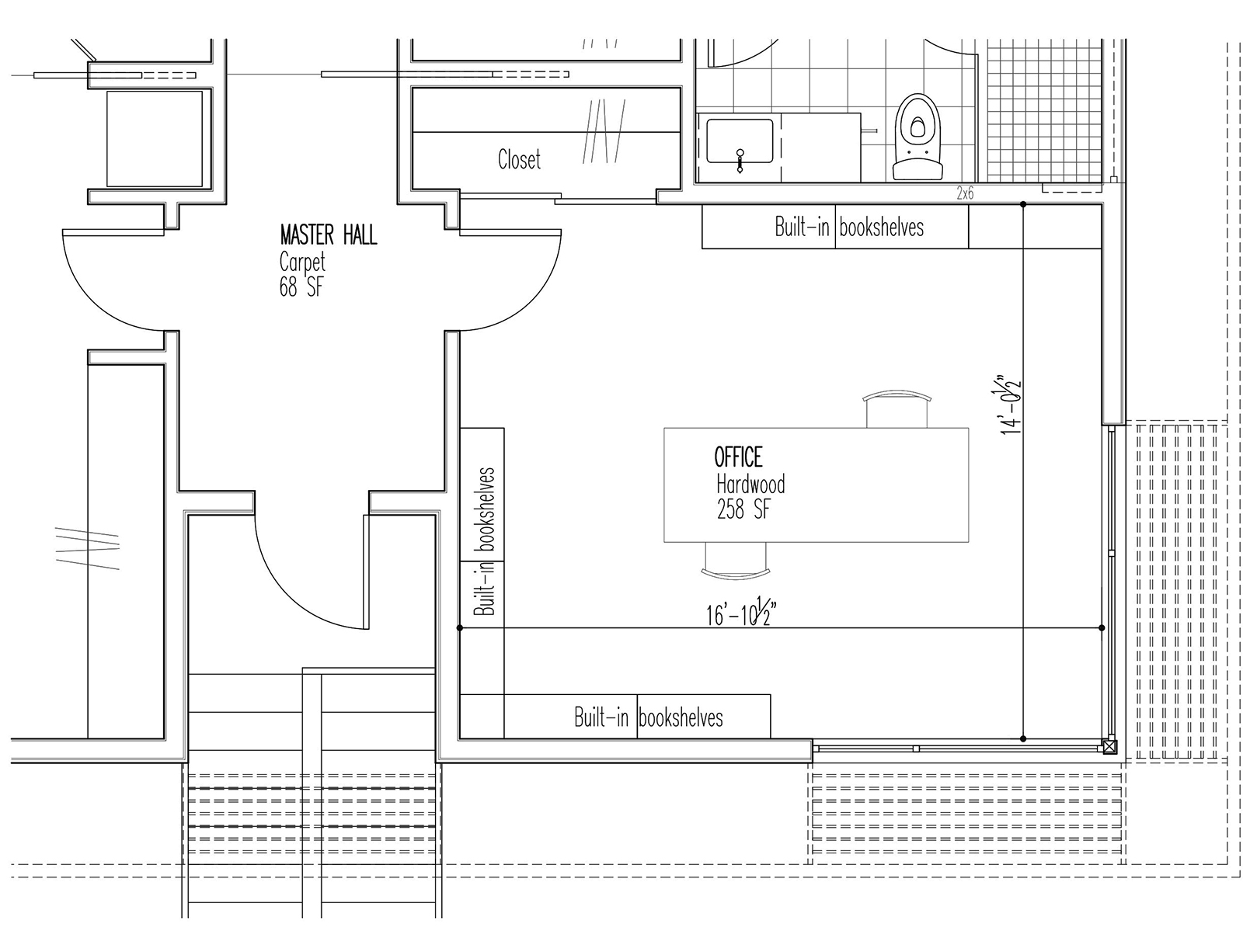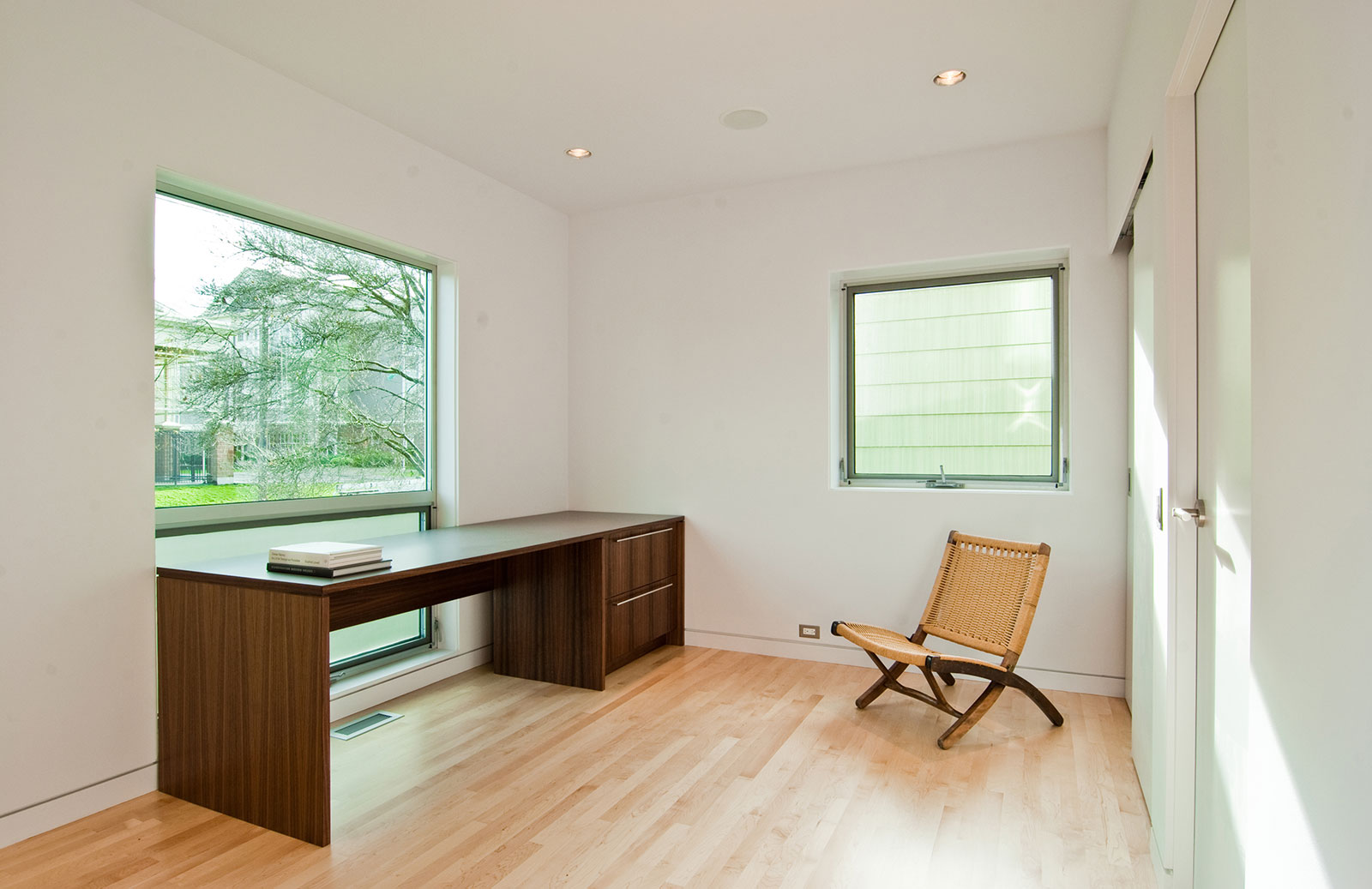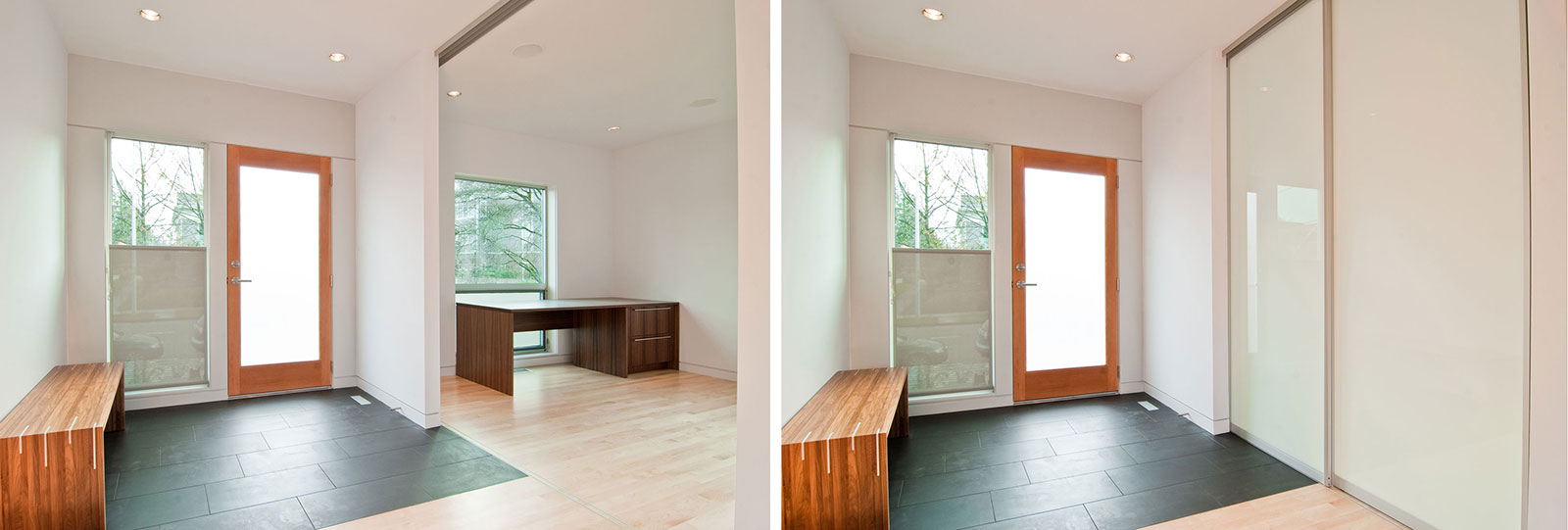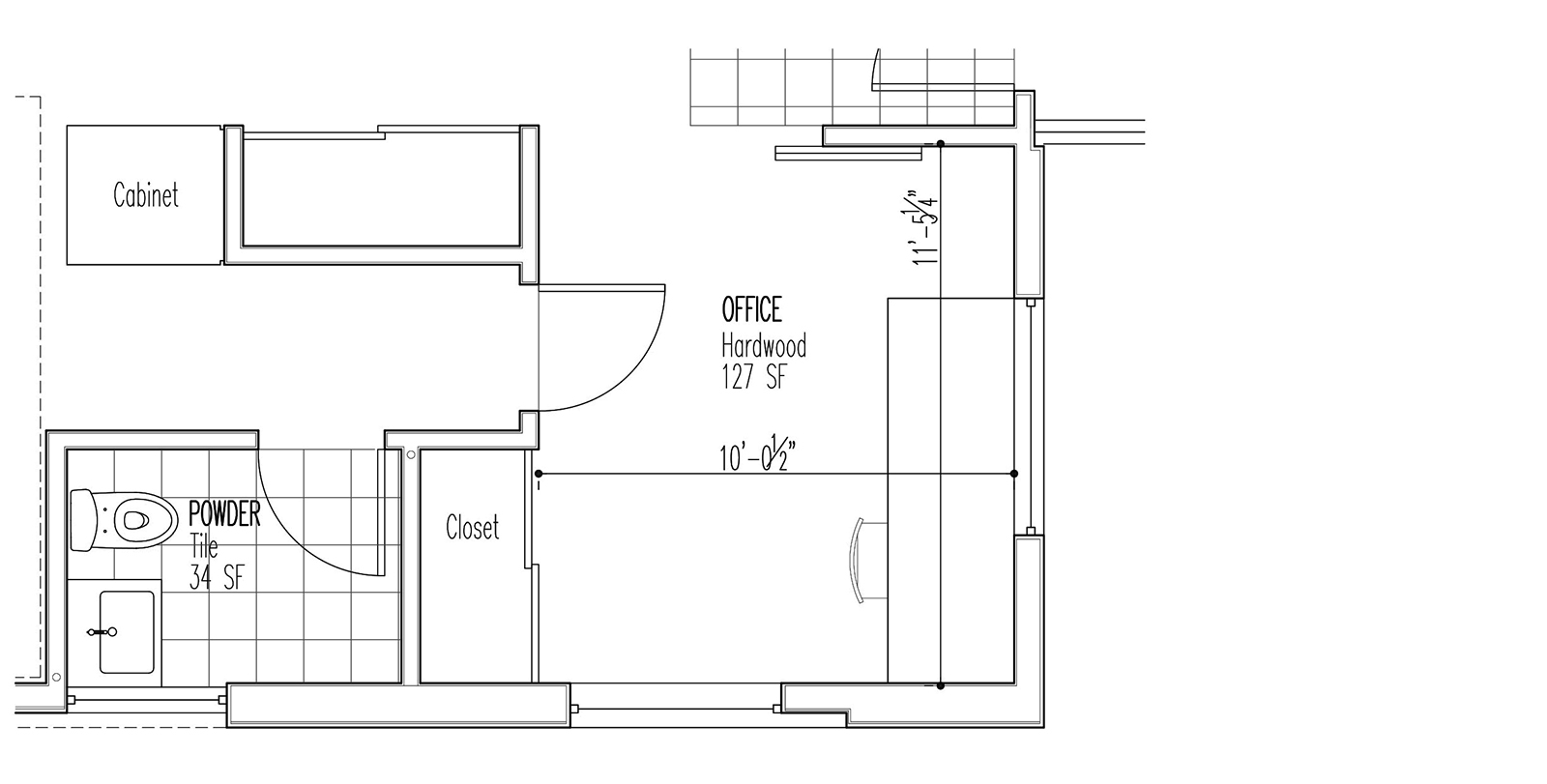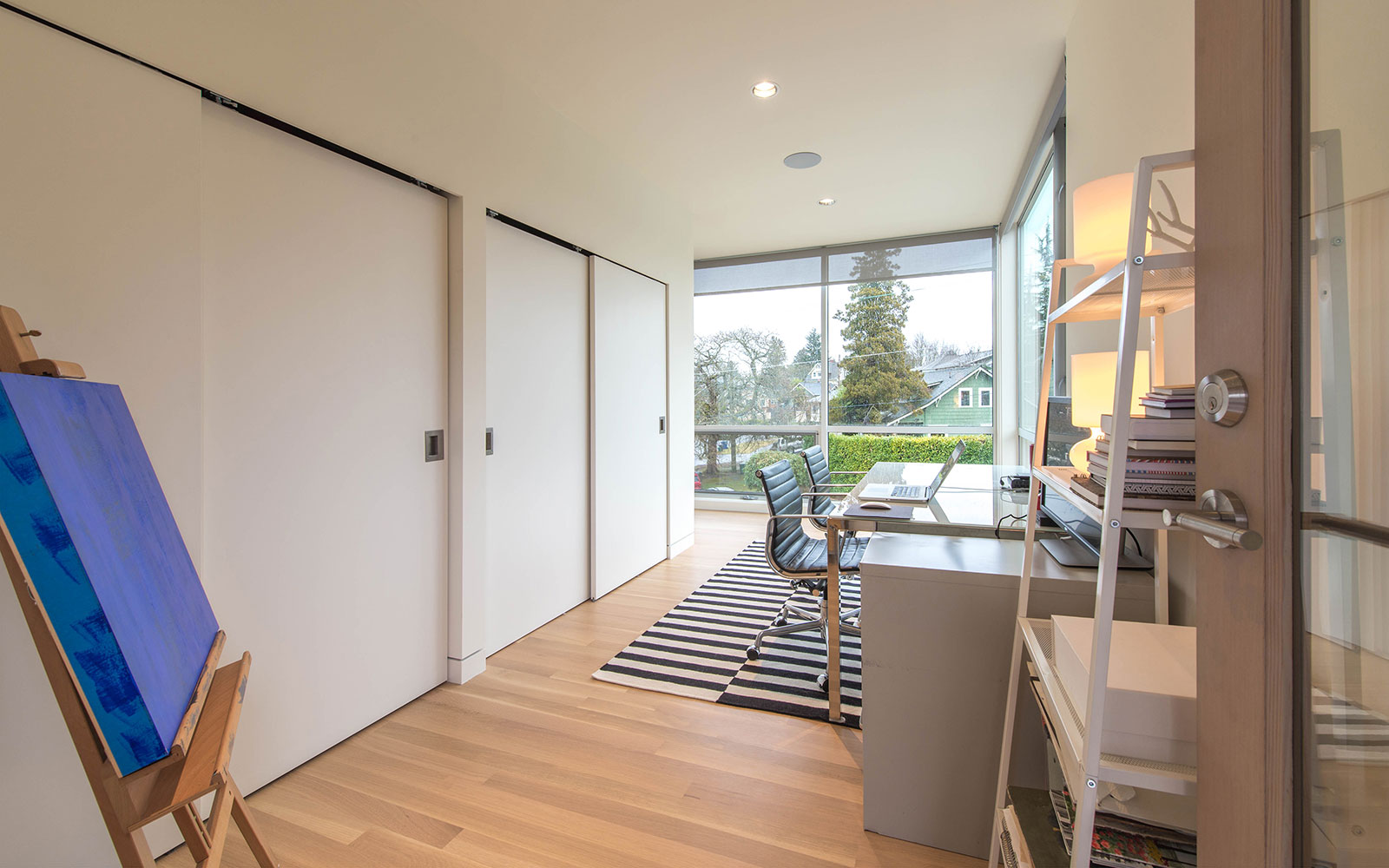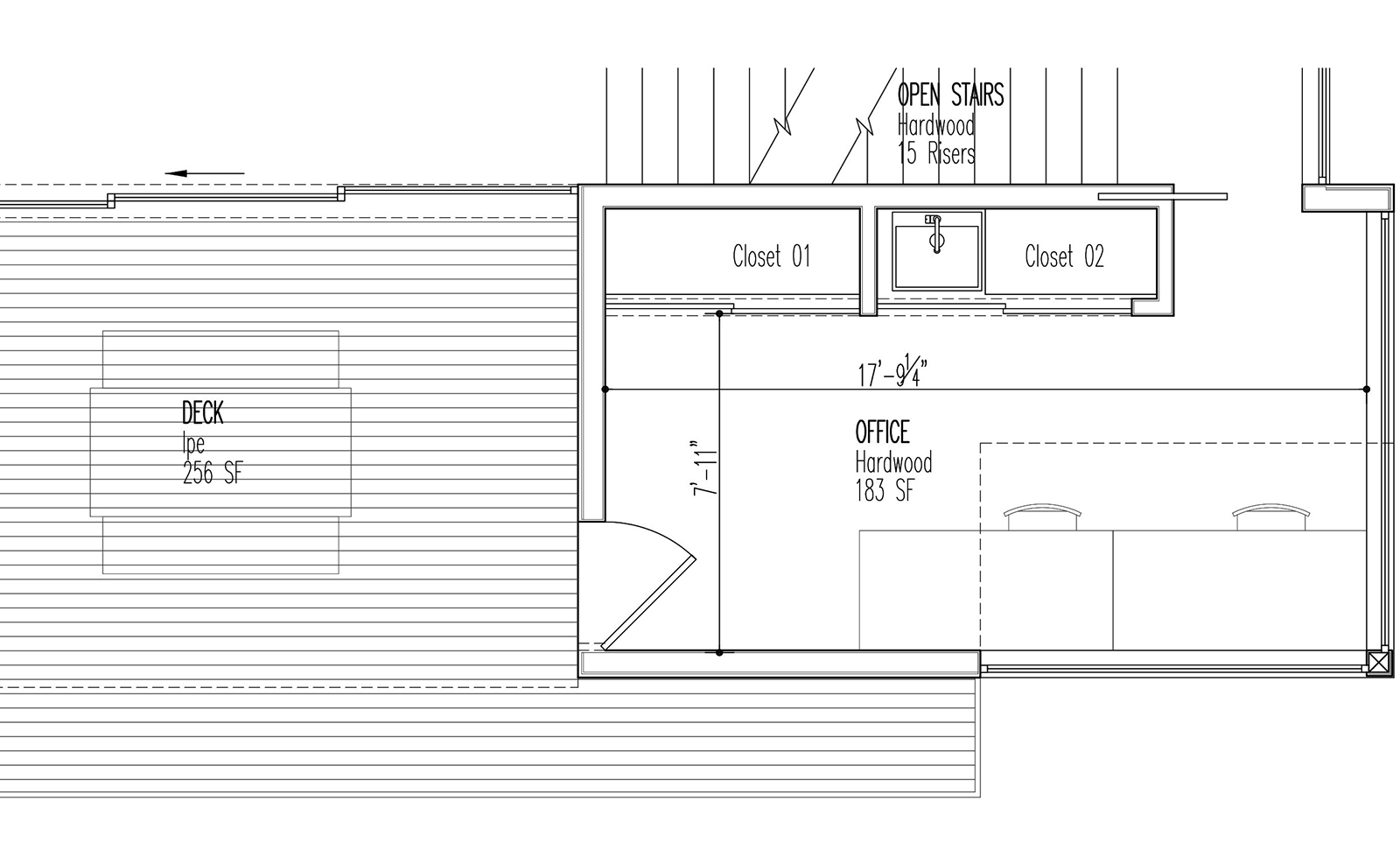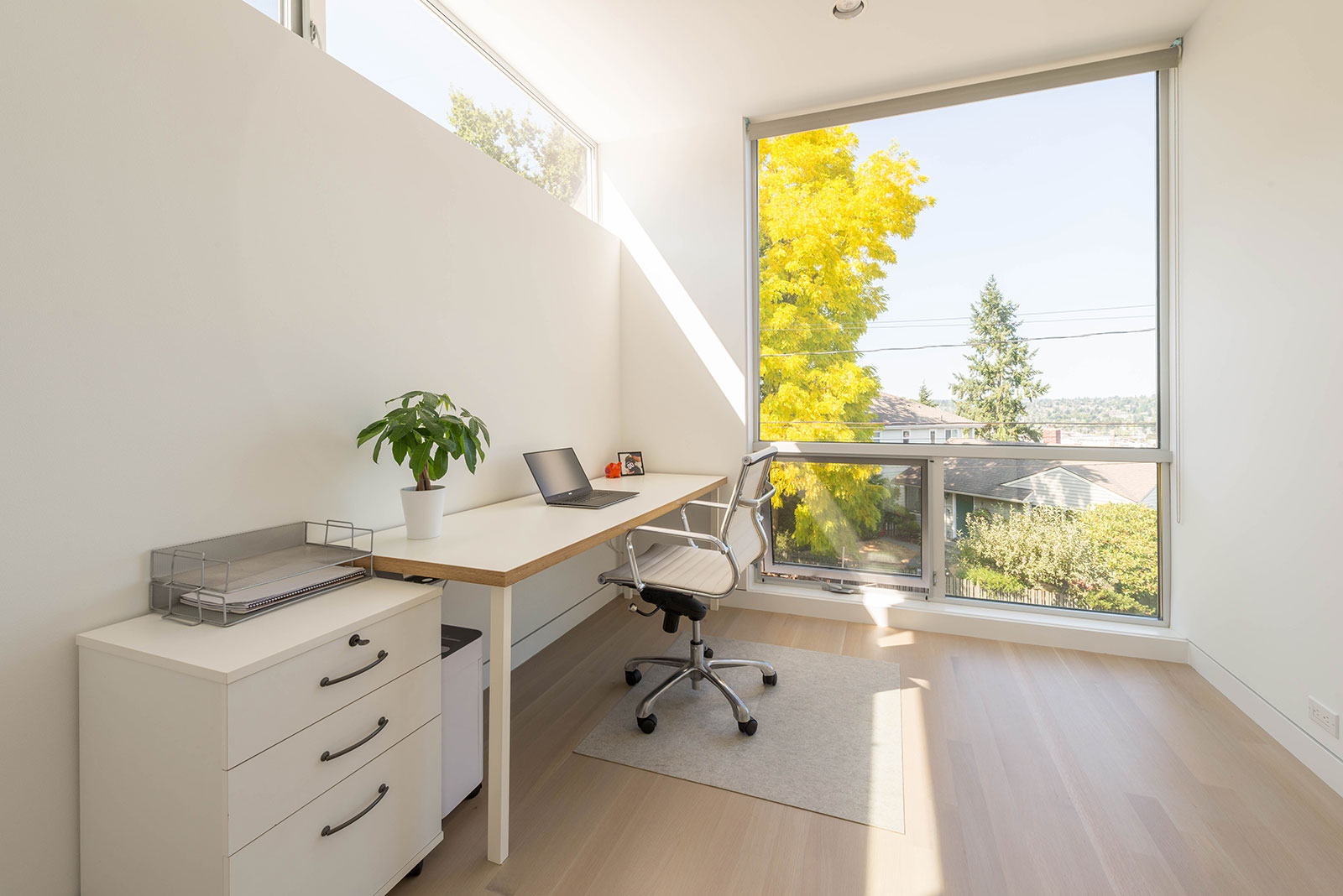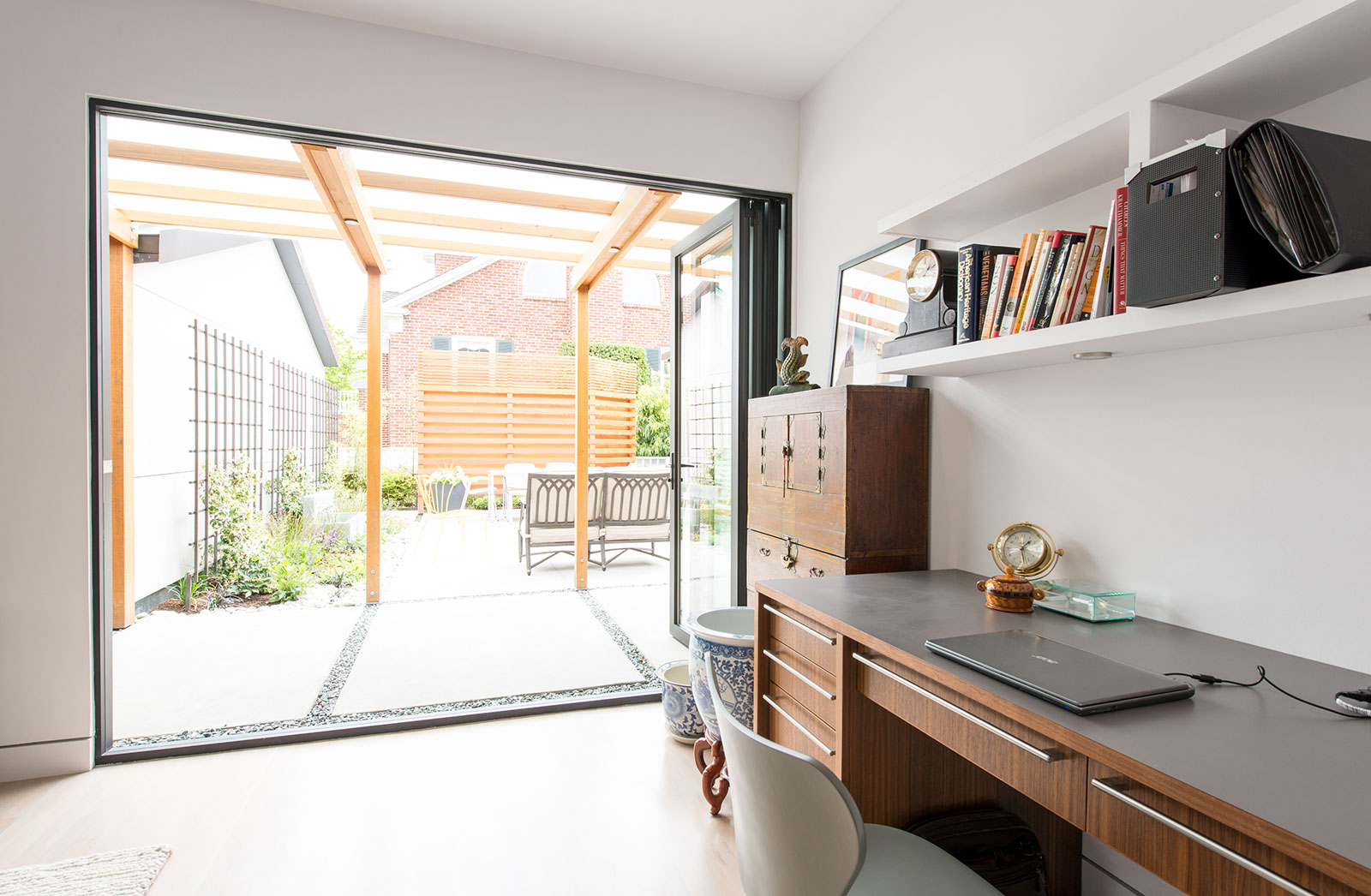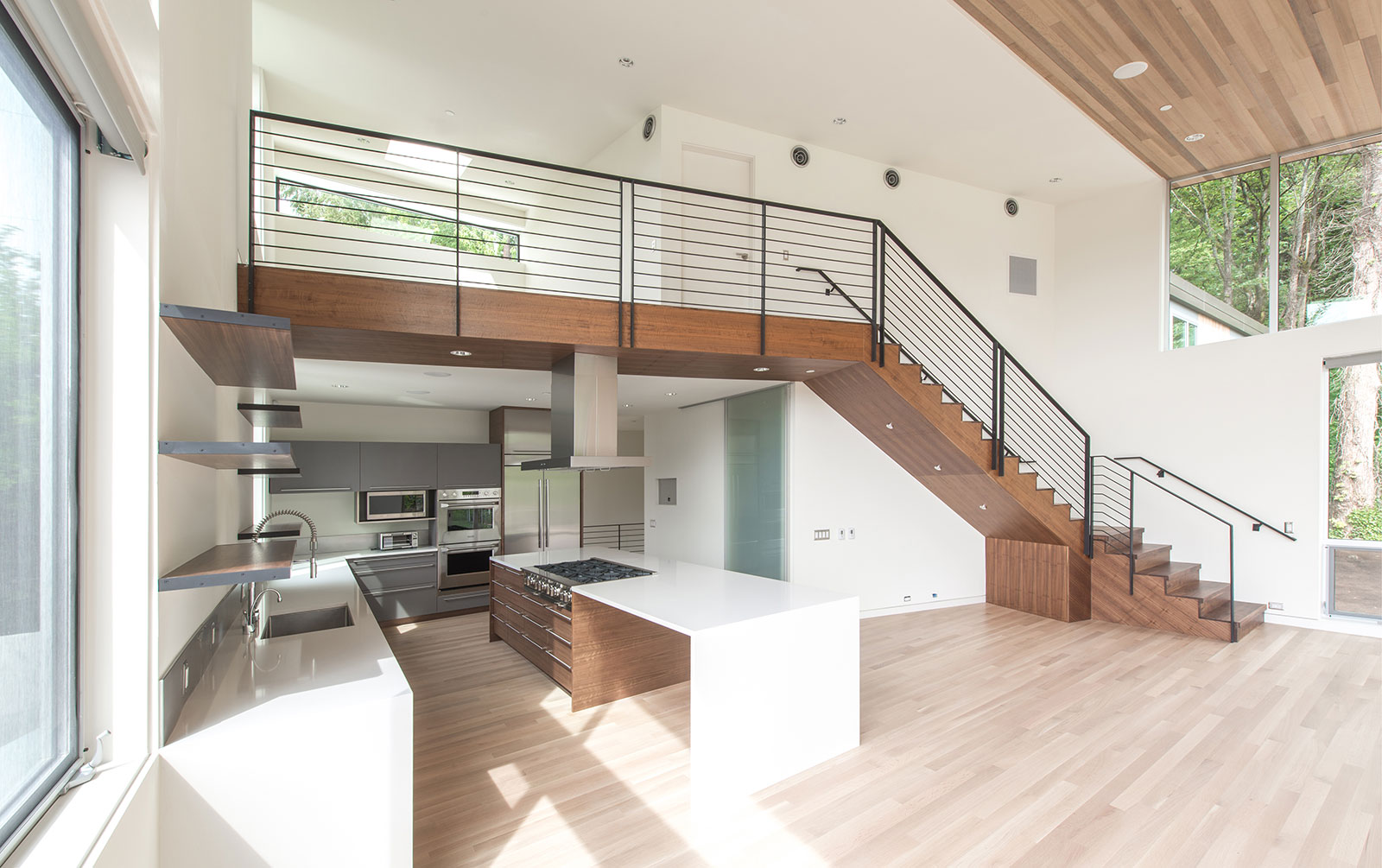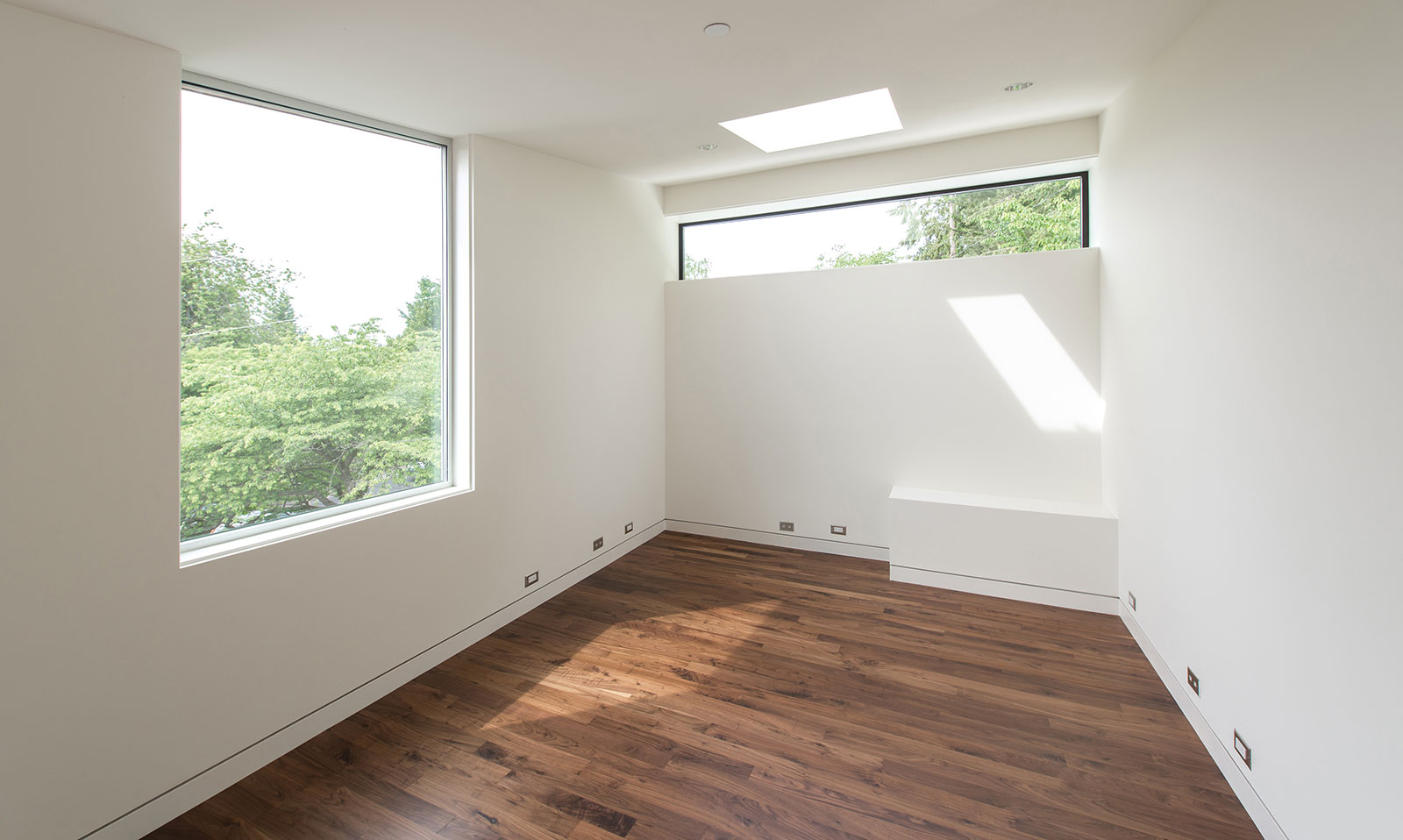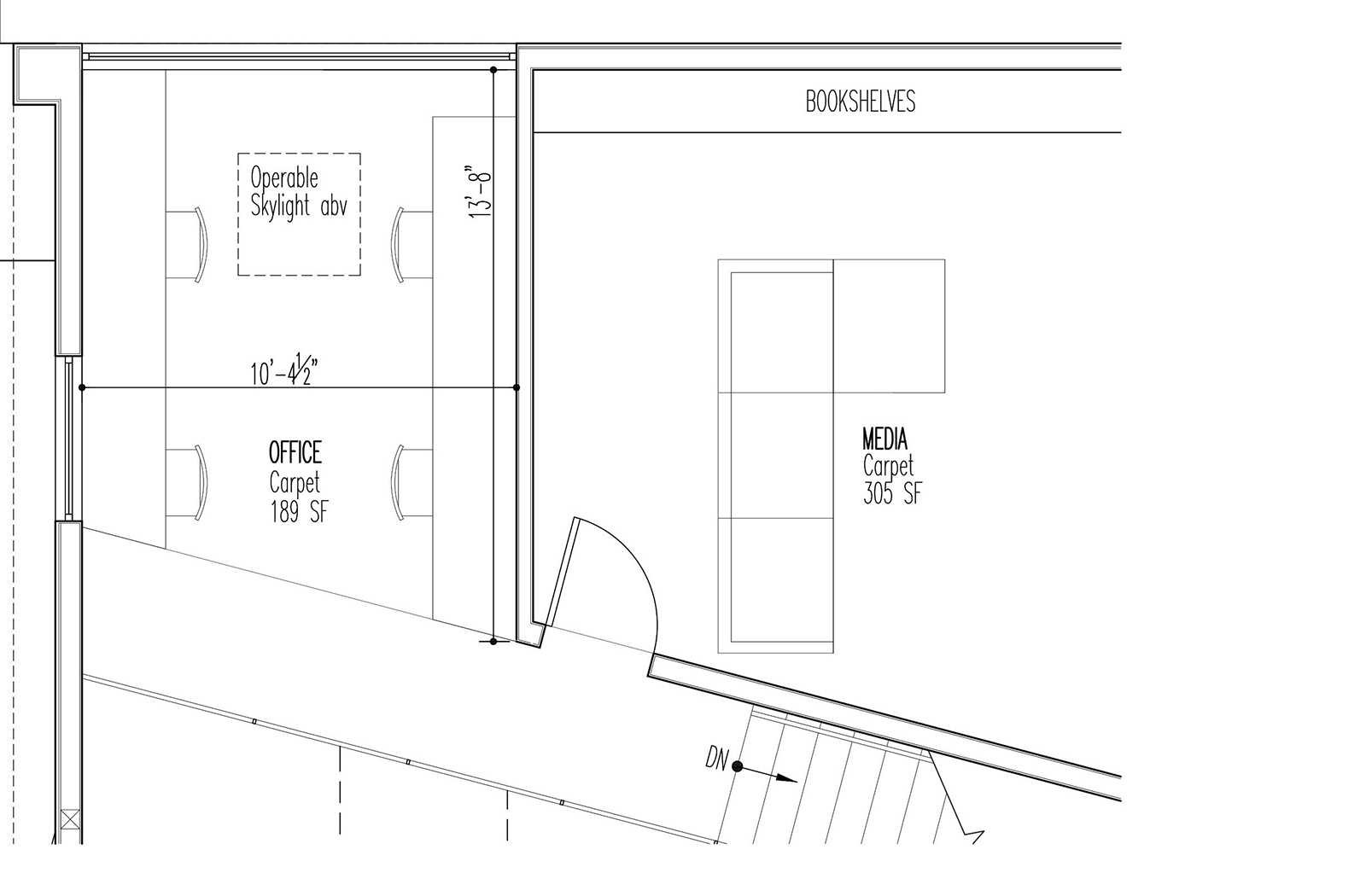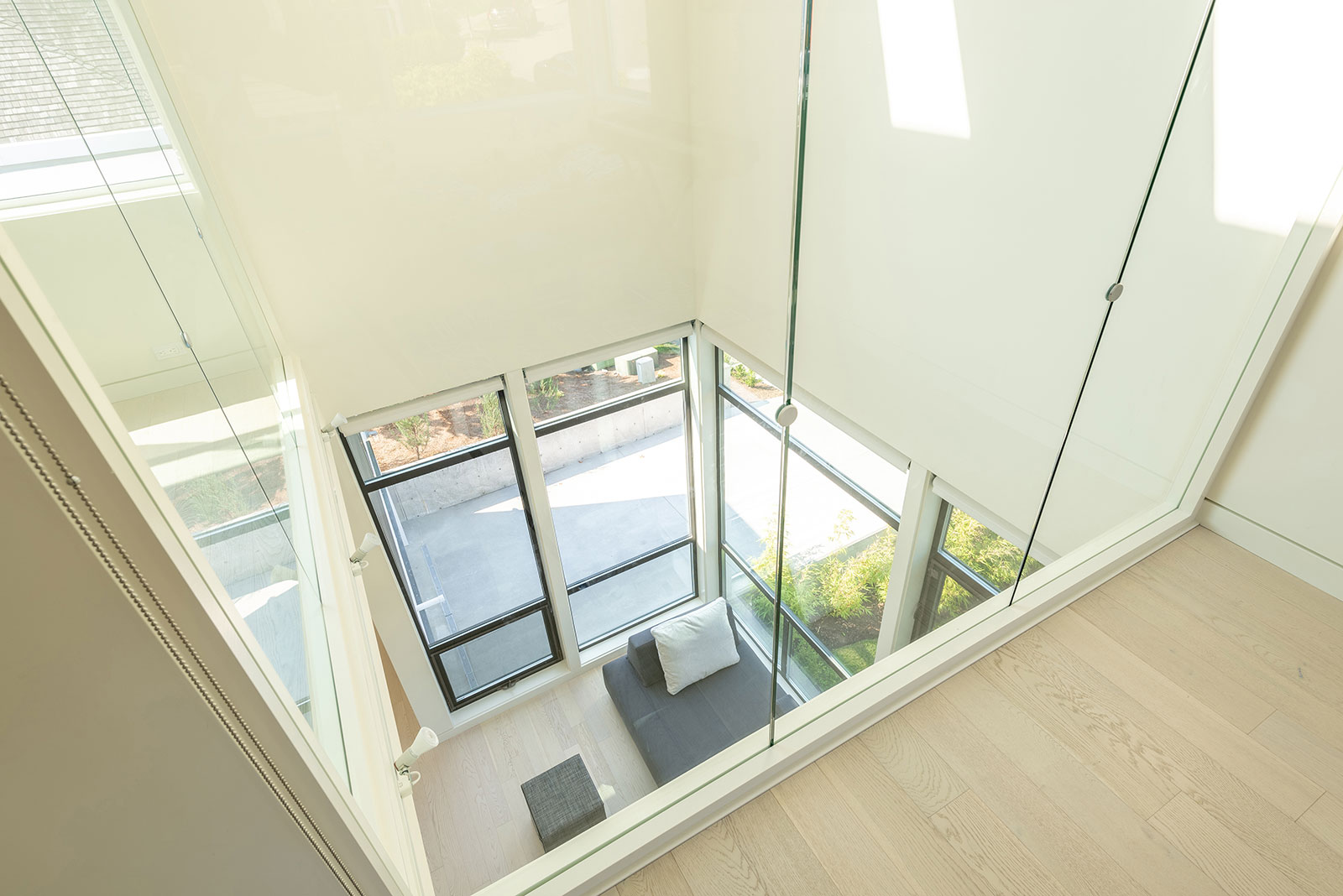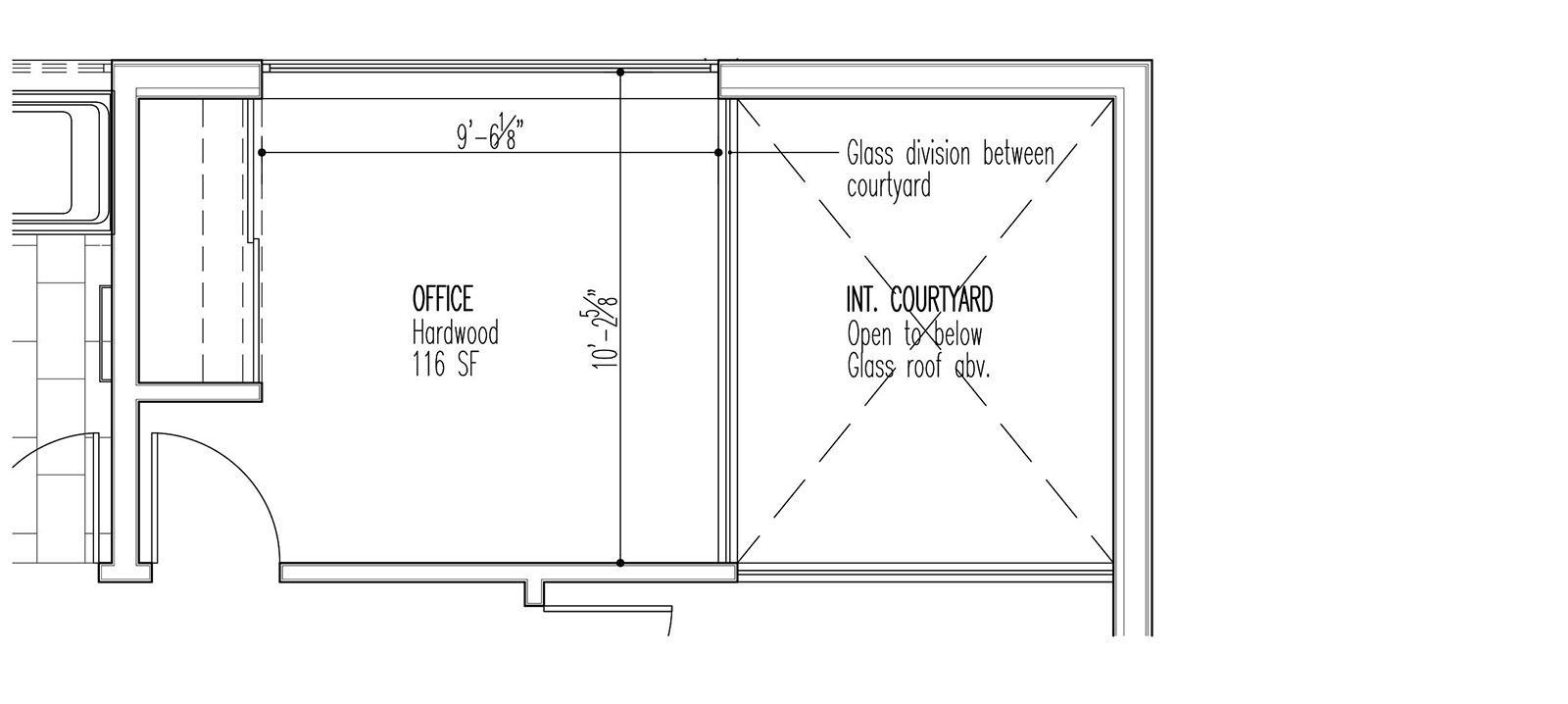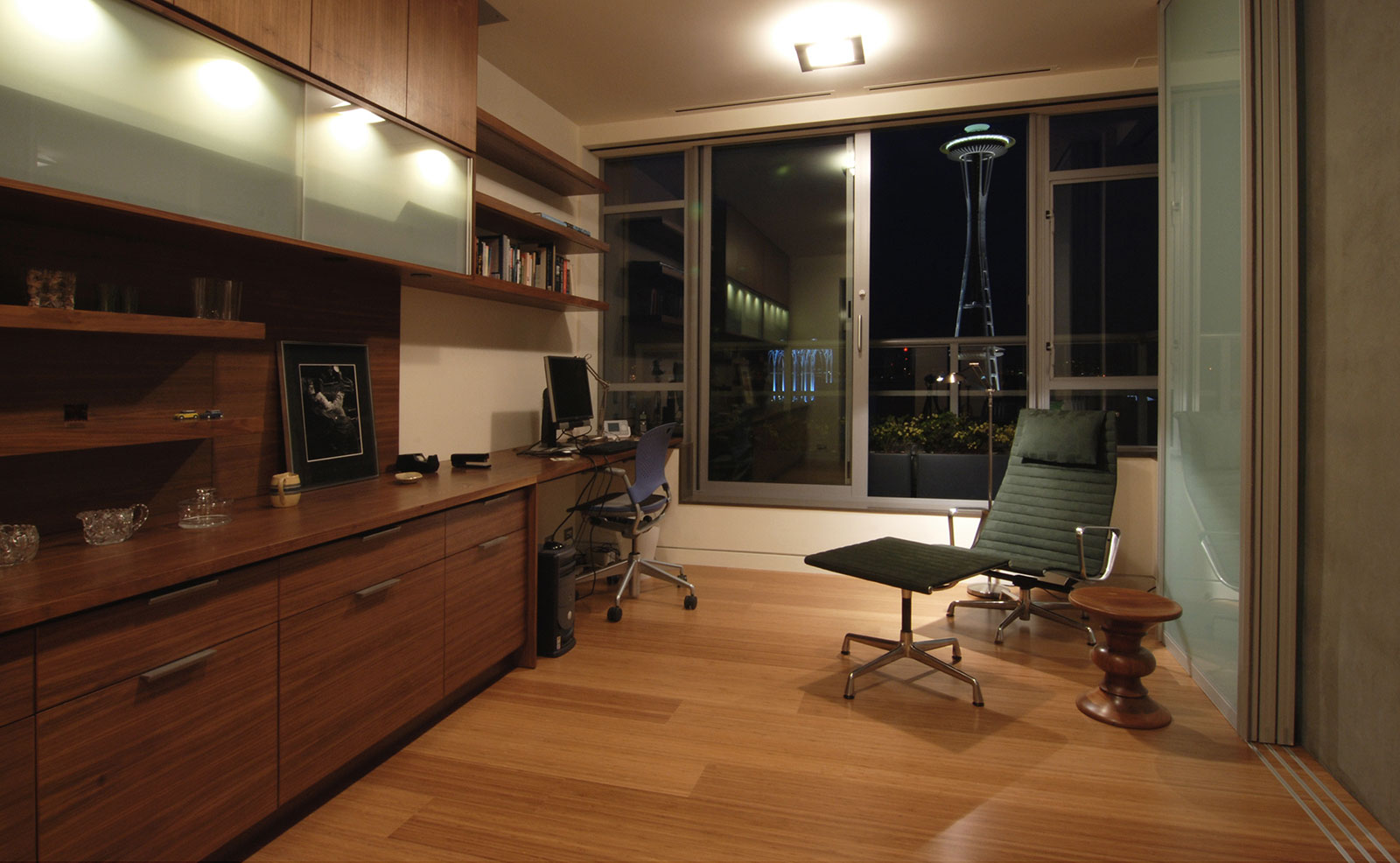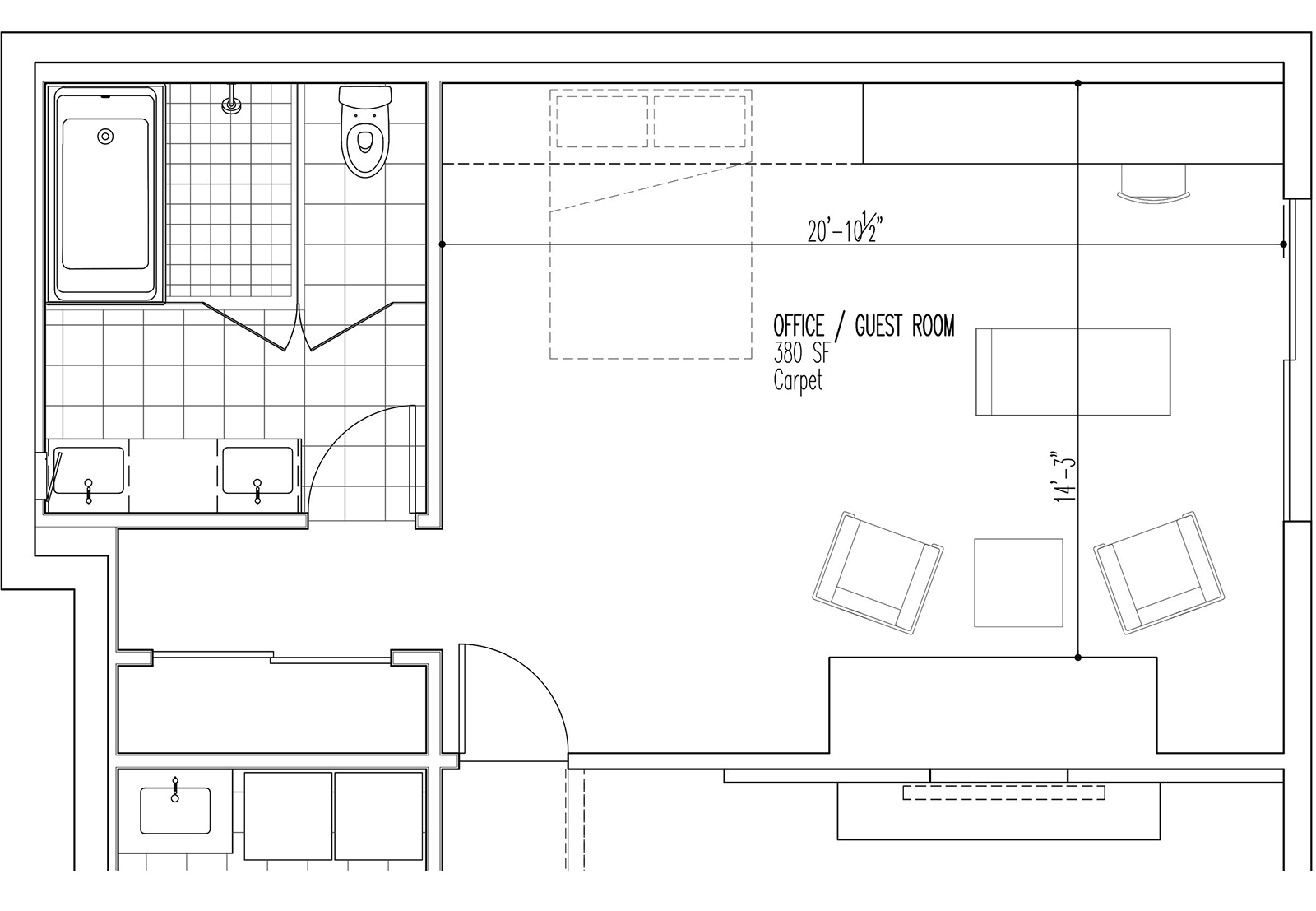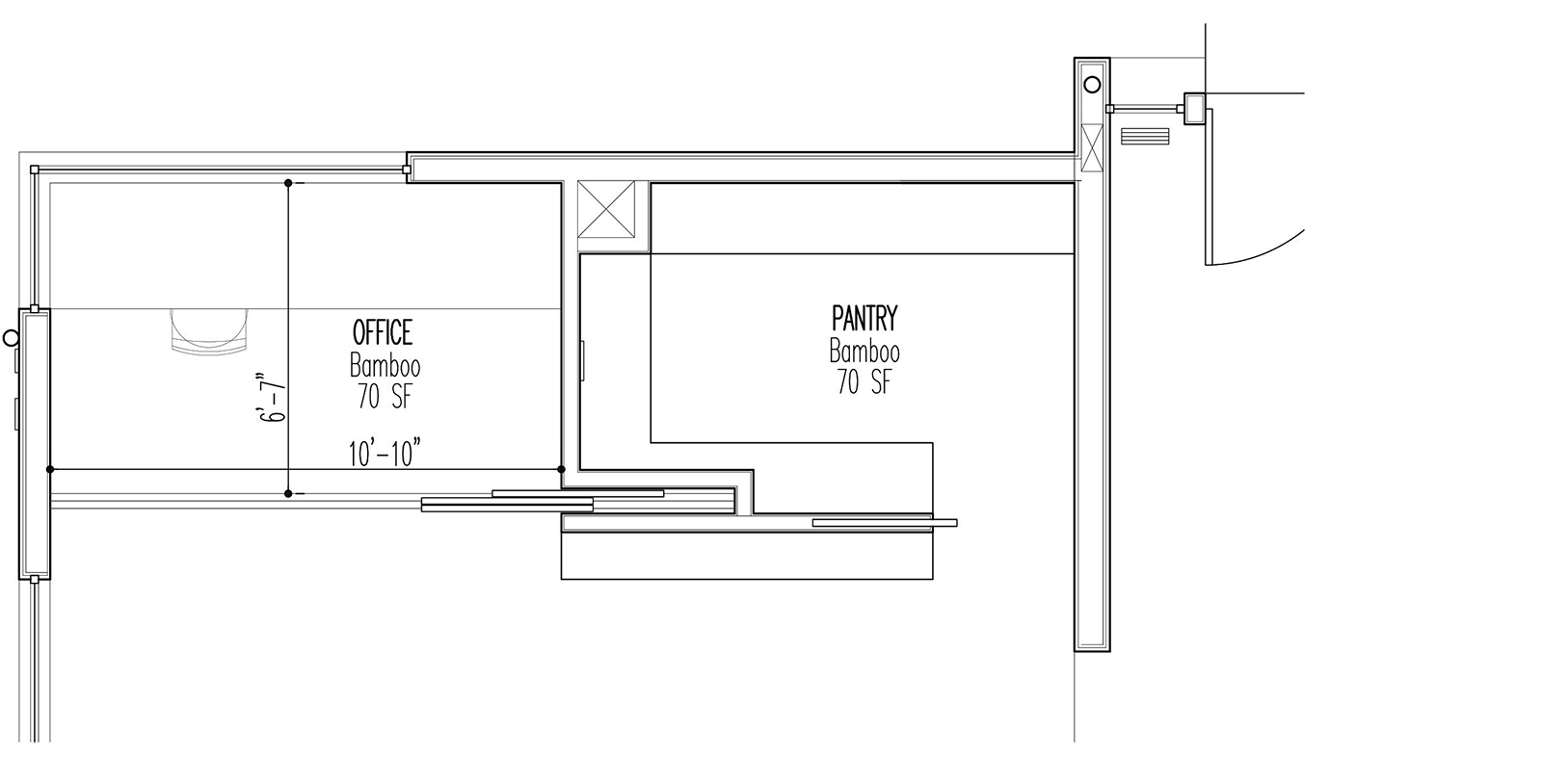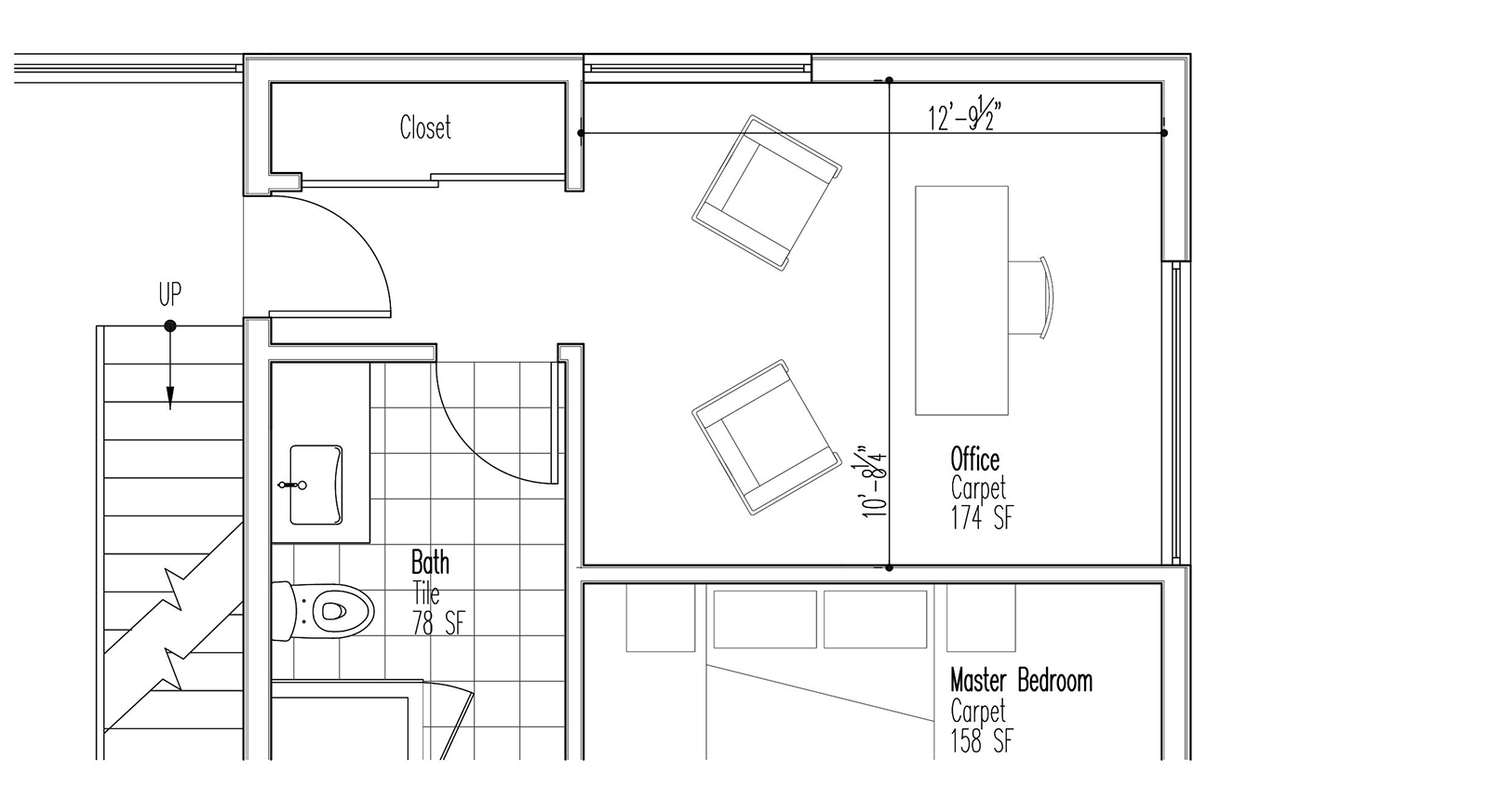In the midst of our new stay-at-home, shelter-in-place reality, it’s no exaggeration to say that the home office has never been more important. We’re writing this blog post from a home office, and many of you are likely reading these words from a home office. The hours we are now spending in our home offices has increased exponentially, which in turn highlights the design and thoughtfulness of our domestic work environments. With the new global situation at the top of our minds, we spent some time combing through 20 years of projects in search of inspiration and guidance for how to better shape our new, though familiar, work environments. Our findings revealed seven core home office concept designs, and 13 unique approaches to this program; for each, we are sharing its plan, and our design intentions below.
FORMAL OFFICES
When space allows, a room within a residence can be dedicated to the office function; we will typically include a closet and an egress window, as these features allow a room to be categorized as a bedroom, which yields a higher appraisal value than a home office, and they provide flexibility over time.
MAGNOLIA BLUFF RESIDENCE
This clean, spacious office includes a corner window that captures territorial views to the southeast, filling the room with morning light, and the generous dimensions of the space allow for a central desk or conference table.
QUEEN ANNE RESIDENCE
Located just off the entry area, this home office is simple and accessible. It opens to the adjacent common areas, and closes for privacy with a two-panel Raumplus etch-matte glass sliding door system.
GATEHOUSE OFFICES
These offices are deliberately positioned to offer a view of the front entry; this provides an elevated level of security, a connection to the neighborhood, and a generous means for greeting visitors.
CASE STUDY HOUSE 2016
Designed as a dedicated work space and painting studio for a husband and wife, this home office was positioned at the corner of the residence to provide a visual connection to the entry sequence and the surrounding neighborhood. An exterior door on the west wall allows a direct link to an upper level deck, and the passageway to the common areas is flanked with bookshelves (deliberately kept out of the direct sunlight).
QUEEN ANNE RESIDENCE
In addition to providing sightlines to the front door, this second level office captures a view to the north, which includes handsome landscaping. Light, bright, and tidy, this is one of our favorite offices, and it’s a pleasure to spend time in. The floor to ceiling window is divided at 36” above the finished floor to include an awning vent for air circulation, and a clerestory band at the west wall maintains privacy.
MAGNOLIA RESIDENCE
This office is positioned along the entry sequence, and opens to an adjacent courtyard by way of a three-panel La Cantina accordion door with an 8’ opening, which creates a perfect indoor-outdoor work environment during Seattle’s temperate summers. The space also includes a small media area.
LOFT OFFICES
When the floor-to-ceiling height of a residence is generous enough, an office loft can be slipped in with a minimum head height of 7’-6”. These spaces offer a dedicated office area with a connection to the common areas below. The downside is that they often share acoustics with other spaces (e.g., living room or kitchen), which should be considered in the design.
MERCER ISLAND RESIDENCE
This busy loft office space was designed as a watchful perch, with adults working above and kids playing below. In order to aesthetically differentiate the functions, the stair is clad in walnut, while the office remains clean and bright.
HARRISON STREET RESIDENCE
The client requested a visual connection from the office to the common areas, while minimizing the shared acoustics. To achieve this, we installed floor-to-ceiling glazing panels along the north elevation, which allow a view to an interior court, and radiate light from skylights above and glass walls below. Collectively, these details provide fantastic natural light for working and making.
LOUNGE OFFICES
Under the right circumstances, adding a small living area or lounge to an office function can provide a useful and enjoyable environment. The discipline of the user is a factor in the success of such a space, however, if they are easily distracted, the lounge feature may prove to be too much of a temptation.
DESAI RESIDENCE
Designed for work, entertainment, and the occasional poker game, this office required additional real estate, but covers many more functions than the standard home workplace. Custom-built cabinets line the walls and include nooks for hiding the A/V and office equipment, and windows on the south wall offer a view of downtown, Seattle.
PENTHOUSE 03
A straight run of walnut cabinets evolves into open corner shelving at the window wall; retaining the view to the stunning spectacle of the Space Needle beyond was paramount, and the floor area was kept open for lounging. A set of Raumplus etch-matte sliding glass doors can be fully opened for community with the adjacent living room, or closed for privacy.
GUEST ROOM OFFICES
The flexibility for a home office to also function as a guestroom can be a lifestyle game-changer, and there are a variety of interior design tricks to achieve both functions without one compromising the other.
RISLEY RESIDENCE
The extra large basement area of this classic mid-century modern residence accommodates all the amenities of a guest room and a tidy office area. The upper bank of open cabinets tuck in just below the drop soffit (for heating and air conditioning), and the room looks out onto a west facing terrace with a view of the Puget Sound. An in-suite bathroom provides an additional amenity for this home office.
POCKET OFFICES
The typical single-family residence doesn’t have enough floor area to provide a home office, however the need for this use may warrant the dedication of space. More, a pocket office may be achieved by overlapping functions, and can be an effective addition that would require a minimum of space.
DAVIDSON RESIDENCE
The residents of this home put a premium on having an office adjacent to the kitchen, which was challenging, as there was limited square footage allowed by the re-purposed foundation. We designed a pocket office that takes advantage of the space around the kitchen island, and tucks a desk into a mere 70-square-feet, which is about the size of a large pantry. Best of all, when the office is not needed, a three-panel Raumplus glass sliding door system conceals the function and returns the space back to the kitchen.
PRIVACY OFFICES
There are a number of good reasons to increase the screening of some offices. Sometimes the etch-matte glass and interior screens eliminate monitor glare and help with monitor accuracy (think illustrations for graphic designers, x-rays for doctors, etc). Other times, a view or access to direct sunlight simply isn’t desirable. Because the privacy office is detached from any sort of view, they, by design, have more latitude in terms of where they can be located within a residence.
ADMIRAL VIEW RESIDENCE
Detailed x-ray analysis and privacy were the drivers of this home office, which is located near the common areas. During the day, the room fills with a soft, consistent light, and at night the windows glow like a Japanese lantern on the exterior.
CASE STUDY HOUSE 2012
The privacy factor of this office is situational, as the east elevation uses etch-matte glass to screen a nearby house, and clear windows on the north side capture territorial views. This office is outfitted with a full closet and egress window for easy conversion to a bedroom.
SUMMARY AND FURTHER OBSERVATIONS
In the past couple of months, our home offices have quickly become an essential function of our domestic environments, and we’ve quickly learned that thoughtful design of this space not only aids with utility and productivity, but also provides sanity, privacy, and a little serenity. Our new work patterns, along with clever refinements to our home office designs, may very well lead to a lasting and meaningful melding of our domestic and professional spaces. In other words, we may find opportunities in our home offices that will inspire many of us to not want to return to our commercial offices. At minimum, identifying and implementing a balance between the two feels inevitable.
As we continue to enhance the design and function of our home offices, there are a couple of features that have recently risen to the top as essential: a clean and unencumbered background for video calls and conferences. Every surface in a home can very often be usurped for storage, however with video becoming more prominent throughout the workday, one’s background communicates a great deal about how they work and what they value. Storage closets are indispensable, as they allow the clutter to be neatly tucked away at a moment’s notice. Similarly, built-in bookshelves offer tremendous value, as they provide much needed organizational structure.
Cheers from team BUILD






